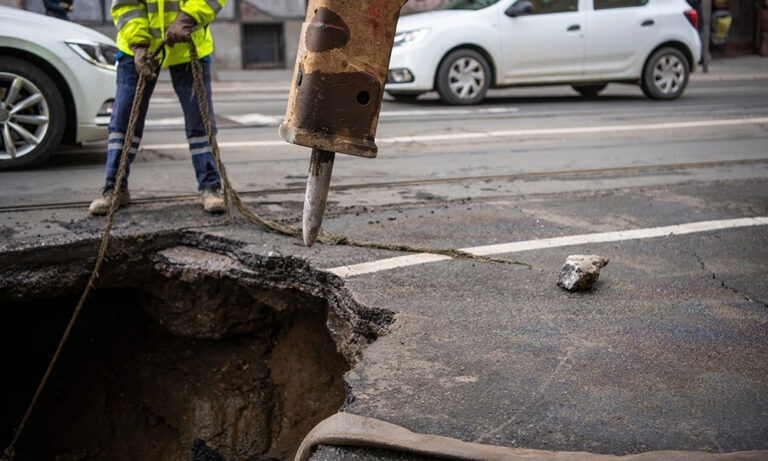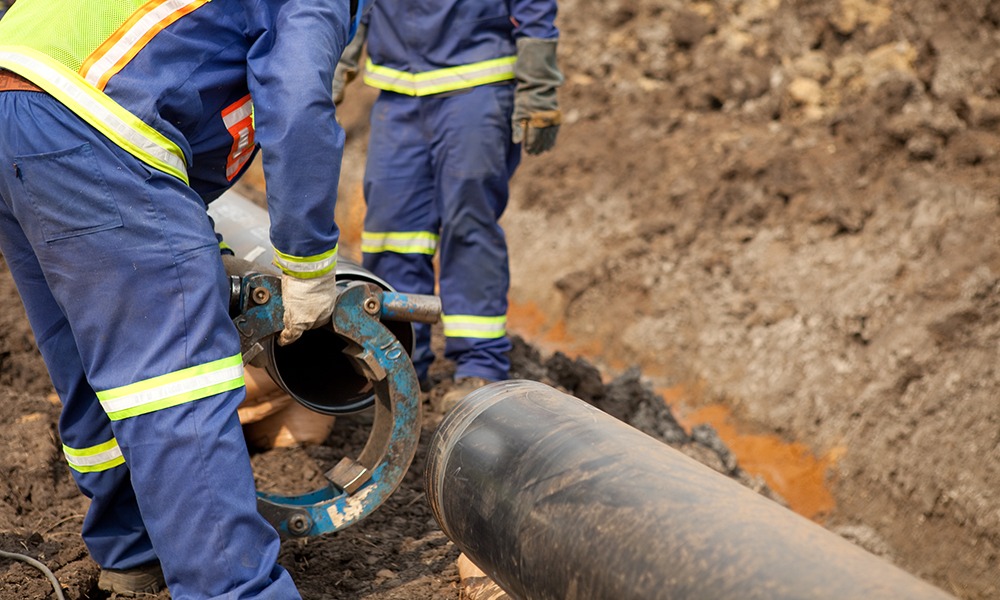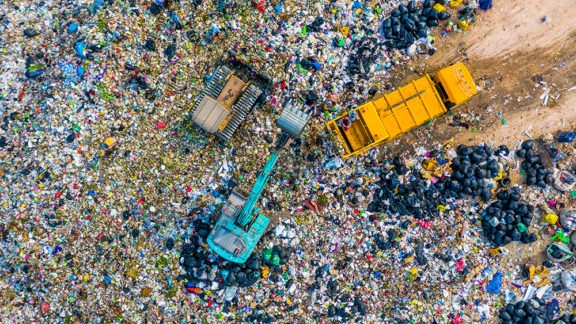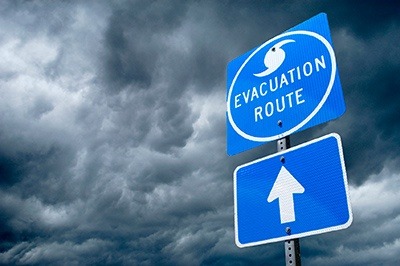At 8 a.m. on a Saturday last October, the parking lot outside the Wenatchee Convention Center in downtown Wenatchee, Washington, buzzed with anticipation, pierced occasionally by the insistent BEEP! BEEP! BEEP! of a snowplow backup alarm.
This was Washington state’s 10th annual ROADeo, a hands-on test of skill, wit, and equipment operations in which public works maintenance professionals from around the state compete to pilot forklifts, backhoes, and other machinery around a series of obstacles. The event is part of the annual meeting of the Washington Chapter of the American Public Works Association (APWA).
The ROADeo showcases these professionals’ precision and skill. It also serves as a reminder of the essential role public works plays in keeping our cities running — particularly after a disaster. Much of what public works personnel do isn’t easily visible. Often, workers drive snowplows through deserted streets or repair water main breaks in the middle of the night while the rest of us sleep.
But public works departments play a crucial role in emergency planning and response, as well as in the long-term resilience of a city and region. So how can cities best recognize and hone public works capabilities so that they’re sharp when needed most?
Public works departments provide essential disaster planning and recovery services
According to the Federal Emergency Management Agency (FEMA) — which has branded 2024 its “Year of Resilience” — nearly 70% of federal funding awarded annually after major disasters supports public works functions such as “debris removal, roads and bridges, water control facilities, public buildings, and public utilities.” And in the year after Hurricane Katrina decimated Alabama, Mississippi, and Louisiana, FEMA reports that public works officials in those states “removed nearly one hundred million cubic yards of debris — enough to fill 20 Superdomes.”
In other words, cities and regions can’t function or rebuild after a disaster without public works.
“Our operations and maintenance crews have the responsibility to maintain, monitor, repair, rebuild, and construct all the parts and pieces of our infrastructure that are critical to sustaining our busy way of life,” said Patrick Zellner, co-chair of APWA Washington’s Operations and Maintenance Committee, which organizes the ROADeo, and as of December 2023, the recently retired street and solid waste maintenance manager for the city of Renton, Washington. Those critical systems include drinking water, wastewater, surface and stormwater management, streets and roads, transportation and signals, and solid waste, as well as the fleet maintenance that keeps it all going.
Like the police and firefighters that depend on the systems they maintain, maintenance workers are also emergency first responders — even if they are often not officially recognized as such. As Juan Silva, a ROADeo contestant and public works maintenance professional from the city of Tukwila, Washington, noted: “I’ve gone from picking up litter one morning to a landslide that afternoon.”
In areas such as the Pacific Northwest, where the threat of a potentially region-altering natural disaster looms daily, the need for skilled public works employees is clear. In the event of a 9.0 earthquake along the Cascadia Subduction Zone, which spans Oregon and Washington, restoring drinking water could take up to three years for those along Washington’s coast. A significant part of the work of replumbing cities — not to mention the many other ways they’ll need to be stitched back together — will fall to public works departments and the maintenance workers who staff them.
But even in regions with less obvious risk, publics works departments serve crucial disaster response functions. As climate change increases the frequency and shifts the range of hazards such as extreme storms, droughts, and wildfires, places less accustomed to preparing for and cleaning up after them will likely have to respond. Now is the time to examine current practices and plan for an uncertain future.

How to build the preparedness of public works departments
Understand your current state
Portfolio-level resilience assessments can illuminate strategies for building resilience that will help prioritize projects after an emergency and yield the highest return on investment — key when facing an often-overwhelming threat forecast. For cities and other public entities, such assessments can guide planning not only for their own facilities but also for their regions so that key infrastructure can keep running after an emergency, protecting community health and safety.
For example, Haley & Aldrich recently advised the Portland, Oregon, area’s Regional Disaster Preparedness Organization on updating its emergency transportation route maps. The perspectives of local public works agencies proved crucial, given their knowledge of the stresses the road systems typically face and their hands-on experience maintaining and repairing them after storms and other events. Of course, a comprehensive assessment such as this one also benefits public works teams, providing them with current information on infrastructure and plans for emergencies.
Formally recognize public works employees as emergency first responders
Zellner, the ROADeo organizer and former streets and solid waste maintenance manager for Renton, is pushing to expand recognition of public works maintenance professionals as first responders. He told us that he is advocating for their inclusion on strike teams of subject-matter experts with the expertise to identify hazards and priorities during and after disasters.
Additionally, recognizing public works employees as first responders ensures they can reach the scene where and when they are needed most. “If our maintenance workers cannot access the area and make repairs, then emergency services cannot do their job and lives are at stake,” said Zellner’s fellow ROADeo organizer Nick Bemis, the road supervisor for drainage and the National Pollutant Discharge Elimination System with Thurston County Public Works.
Host events and trainings, such as ROADeo, that build skills and camaraderie
Each ROADeo event requires participants to navigate obstacle courses with intense precision. Participants train for months to compete — training that builds essential job skills with applicability far beyond the event.
Get comprehensive support
Cities, and the infrastructure and systems their public works teams manage, are complex organisms. Often, we focus on what government does wrong, but public works is one of those things government often does right — quietly, persistently, and without fanfare.
From keeping the taps running and toilets flushing to preventing and managing floods and repairing roads, maintenance workers are the glue that holds our communities together and the grease that helps keep them moving — in daily life and in emergencies. Contact the author below to learn how Haley & Aldrich can support the resilience of your public works department.
Read more about the ROADeo in Sarah’s post in the APWA winter magazine.
Published: 1/11/2024
Author

Technical Expert




